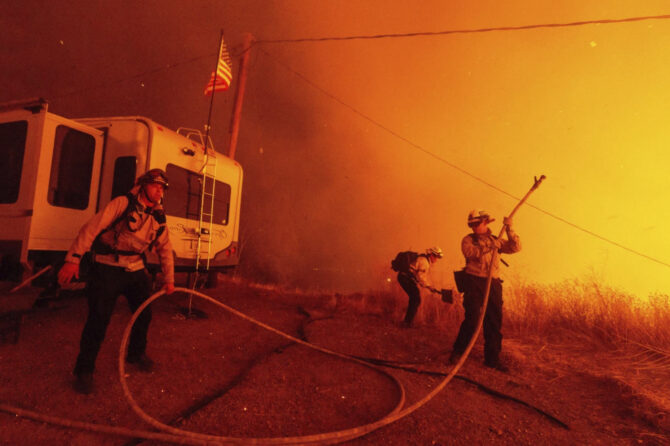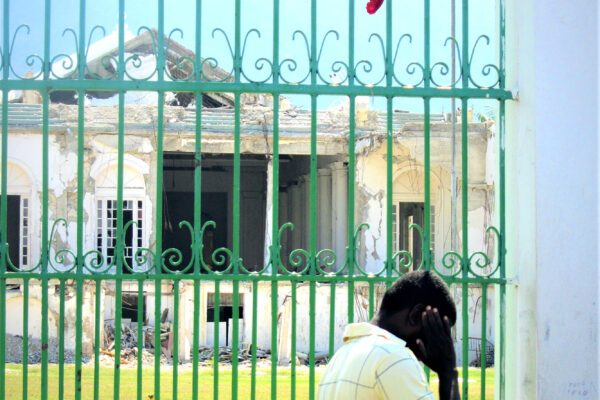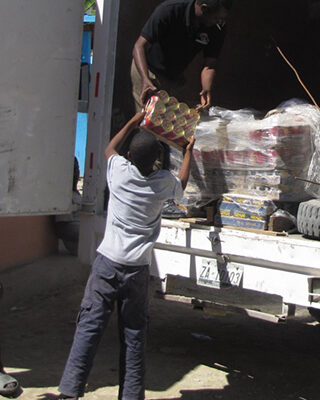
Evacuation orders were lifted Thursday for tens of thousands as firefighters with air support slowed the spread of a huge wildfire churning through rugged mountains north of Los Angeles, but new blazes erupted in San Diego County, briefly triggering more evacuations.
Southern California is under a red flag warning for critical fire risk through Friday. The area has been facing constant challenges in controlling the fires, as dangerous winds gained strength again Thursday.
The Hughes Fire broke out late Wednesday morning and in less than a day charred nearly 16 square miles (41 square kilometers) of trees and brush near Castaic Lake, a popular recreation area about 40 miles (64 kilometers) from the devastating Eaton and Palisades fires that are burning for a third week.
Crews made significant progress by late afternoon on the Hughes Fire, with more than one-third of it contained.
Two new blazes were reported Thursday in the San Diego area. Evacuations were ordered but were later lifted after a brush fire erupted in the late afternoon in the wealthy enclave of La Jolla near the University of California, San Diego, School of Medicine. Further south, near the U.S.-Mexico border, another blaze was quickly spreading through the Otay Mountain Wilderness, home to the endangered Quino checkerspot butterfly and other unique species.
In Ventura County, a new fire briefly prompted the evacuation of California State University Channel Islands in Camarillo. Water-dropping helicopters made quick progress against the Laguna Fire that erupted in hills above the campus of about 7,000 students. The evacuation order was later downgraded to a warning.
Rain is forecast for the weekend, potentially ending Southern California’s monthslong dry spell. Winds are also not as strong as they were when the Palisades and Eaton fires broke out, allowing for firefighting aircraft to dump tens of thousands of gallons of fire retardant.
That helped the fight against the Hughes Fire in the Castaic area north of Los Angeles, allowing helicopters to drop water, which kept it from growing, fire spokesperson Jeremy Ruiz said.
“We had helicopters dropping water until around 3 a.m. That kept it in check,” he said.
Nearly 54,000 residents in the Castaic area were still under evacuation warnings Thursday, the Los Angeles County Sheriff’s Department said. There were no reports of homes or other structures burned.
Kayla Amara drove to Castaic’s Stonegate neighborhood Wednesday to collect items from the home of a friend who had rushed to pick up her daughter at preschool. As Amara was packing the car, she learned the fire had exploded in size and decided to hose down the property.
Amara, a nurse who lives in nearby Valencia, said she’s been on edge for weeks as major blazes devastated Southern California.
“It’s been stressful with those other fires, but now that this one is close to home it’s just super stressful,” she said.
The Palisades Fire was more than three-quarters contained, and the Eaton Fire was 95% under control Thursday. The two fires have killed at least 28 people and destroyed more than 14,000 structures since they broke out Jan. 7.
Rain was expected to start Saturday, according to the National Weather Service. Officials welcomed the wet weather, but crews also were shoring up hillsides and installing barriers to prevent debris flows as residents returned to the charred Pacific Palisades and Altadena areas.
The California fires have overall caused at least $28 billion in insured damage and probably a little more in uninsured damage, according to Karen Clark and Company, a disaster modeling firm known for accurate post-catastrophe damage assessments.
On the heels of that assessment, California Republicans are pushing back against suggestions by President Donald Trump, House Speaker Mike Johnson and others that federal disaster aid for victims of wildfires should come with strings attached.
The state Legislature approved a more than $2.5 billion fire relief package Thursday, in part to help the Los Angeles area recover from the fires.
Trump plans to travel to the state to see the damage firsthand Friday, but it isn’t clear whether he and Democratic Gov. Gavin Newsom will meet during the visit.
Data collected by the UN agency indicates that at least 8,938 people died on migration routes worldwide in 2024, “making it the deadliest year on record.” This marks the fifth consecutive year of rising migrant deaths, according to the IOM.
“The increase in deaths across many regions demonstrates why we need an international and holistic response to prevent further tragic loss of life,” stated Daniels.
In 2024, the most deaths were recorded in Asia (2,778), Africa (2,242), and Europe (233), according to the IOM.
The 2,452 documented deaths in the Mediterranean Sea do not set a record; however, the IOM emphasises that this “high number underscores the need for adequate search and rescue systems and safe and regular migration routes.”
Final data for the Americas is not yet available, but current figures suggest at least 1,233 deaths, including record numbers of 341 in the Caribbean and 174 in the Darien jungle between Panama and Colombia.
Actual number ‘likely much higher’
The IOM believes “the actual number of migrant deaths and disappearances is likely much higher, as many deaths are not documented due to a lack of official records.”
Additionally, the identity and origin of the majority of deceased or missing migrants remain unknown.
“The rise in deaths is tragic enough, but the fact that thousands remain unidentified each year is even more heartbreaking,” commented Julia Black, who coordinates the IOM’s Missing Migrants Project.
“Beyond the despair and unresolved questions faced by families who have lost a loved one, the lack of comprehensive data on the risks migrants face hinders life-saving responses,” she added.













